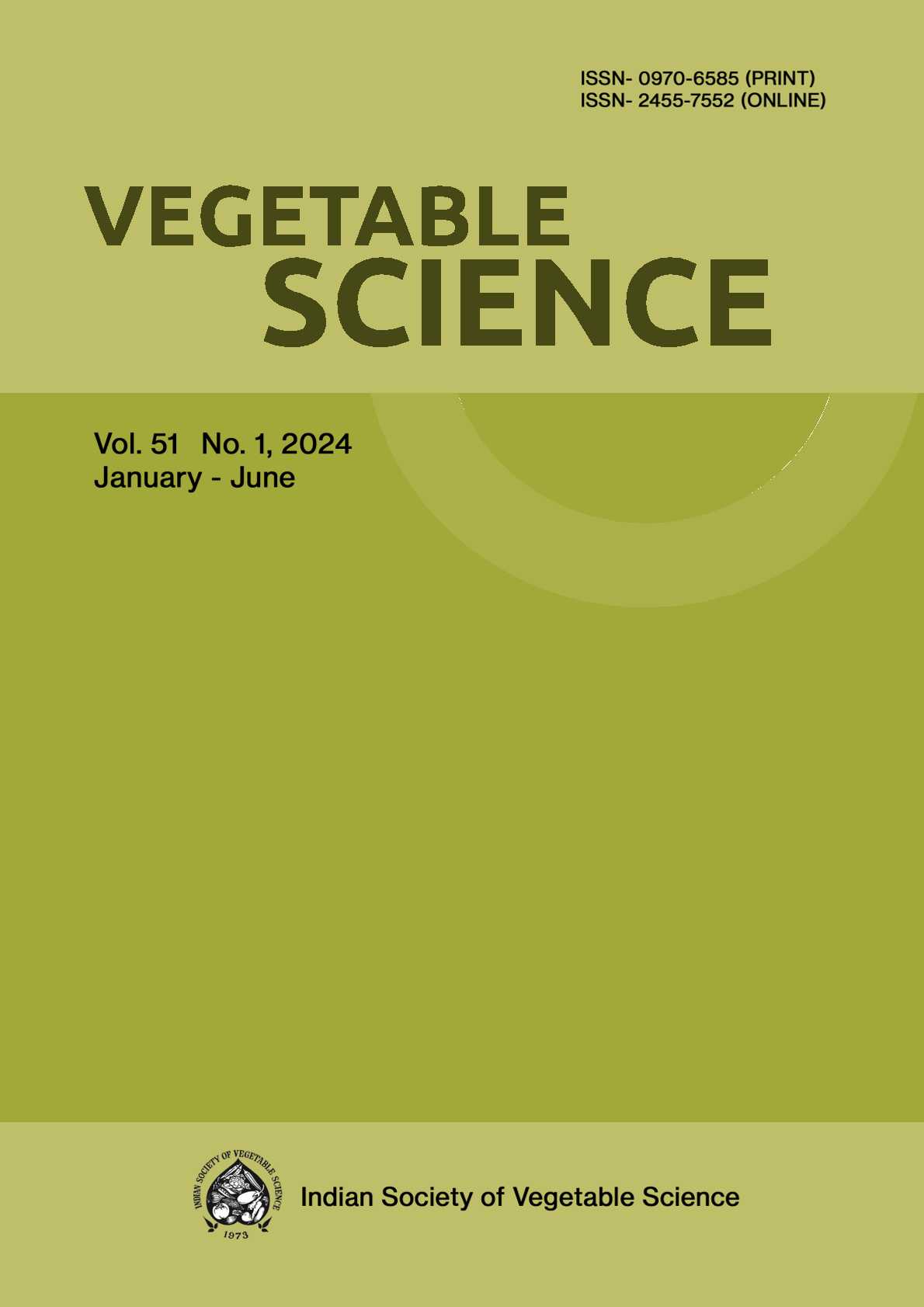Genetic divergence for horticultural traits and ToLCV resistance in tomato (Solanum lycopersicum L.)
DOI:
https://doi.org/10.61180/mf4dd593Keywords:
Solanum lycopersicum, ToLCV, D2 analysis, diversity, germplasm, SolanaceaeAbstract
Genetic divergence analysis of elite germplasm provides a correct picture of the extent of variation which is a prerequisite for choosing promising and genetically diverse lines for desirable traits. Multivariate analysis following Mahalanobis D2 statistics revealed considerable genetic diversity among 30 genotypes of tomato (Solanum lycopersicum L.) for quantitative characters pertaining to growth, earliness, yield and ToLCV. Diversity within and between clusters were observed. Fruit weight, number of fruit per plant and plant height differentiated the germplasm. Six clusters were developed from the D2 analysis using Tocher’s method. Cluster II was the largest cluster contained 13 accessions accounting 43.33% of total genotype followed by cluster III and IV both having 5 accessions, and cluster I with 3 genotypes which were accounting 16.66, 16.66 and 10.00%, respectively. Beside these four clusters, remaining
two clusters V & VI have two genotypes each. The selected lines exhibited diversity despite common parentage. The maximum inter-cluster distance was between cluster VI and I (15078.88) followed by cluster VI and V (13901.29). ToLCV incidence recorded minimum in the genotype H-24 (13.72%) followed by H-88-78-1 (15.12%); however, the severity percentage was observed minimum in genotype H-88-78-1 (7.50%) followed by VRT-3-2-1 (8.17%), Cheku Grand (9.17%), H-24 (13.33%) and Inden 2013-4 (13.53%). Pusa Sadabahar showed the maximum incidence and severity percentage of 52.58 and 38.67%, respectively. The assessment of variatio guides the breeder to select superior parents to initiate an effective and fruitful crossing programme to improve the genotypes.
Downloads
Published
Issue
Section
License

This work is licensed under a Creative Commons Attribution-NonCommercial-NoDerivatives 4.0 International License.






